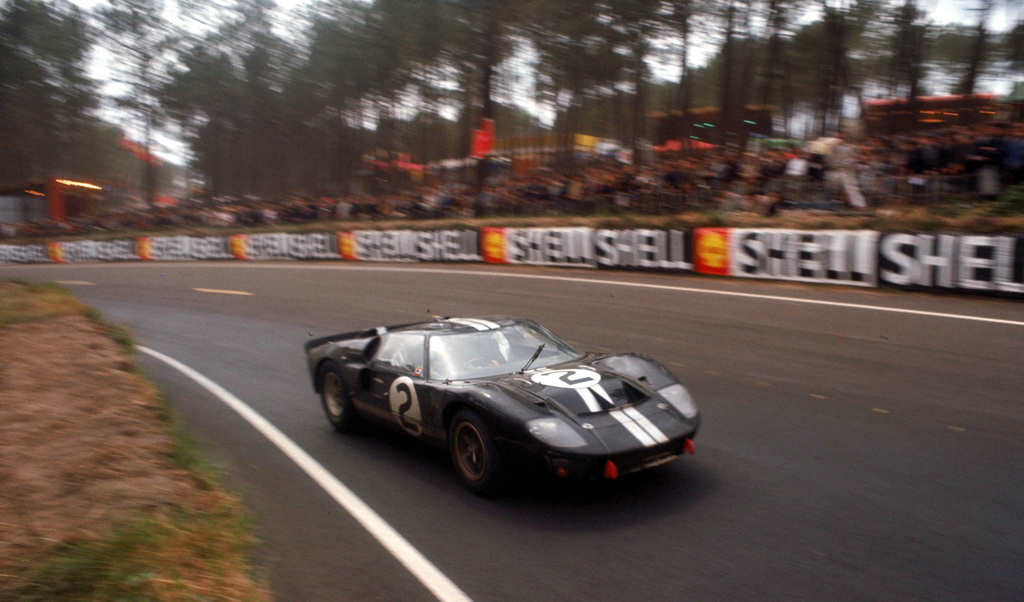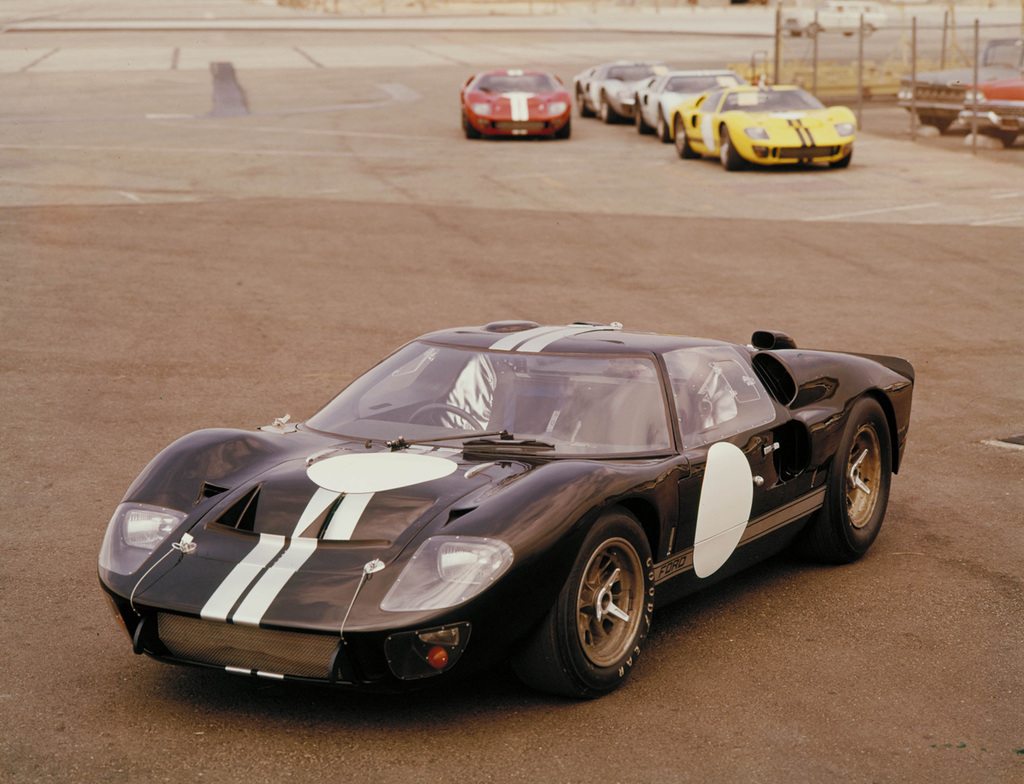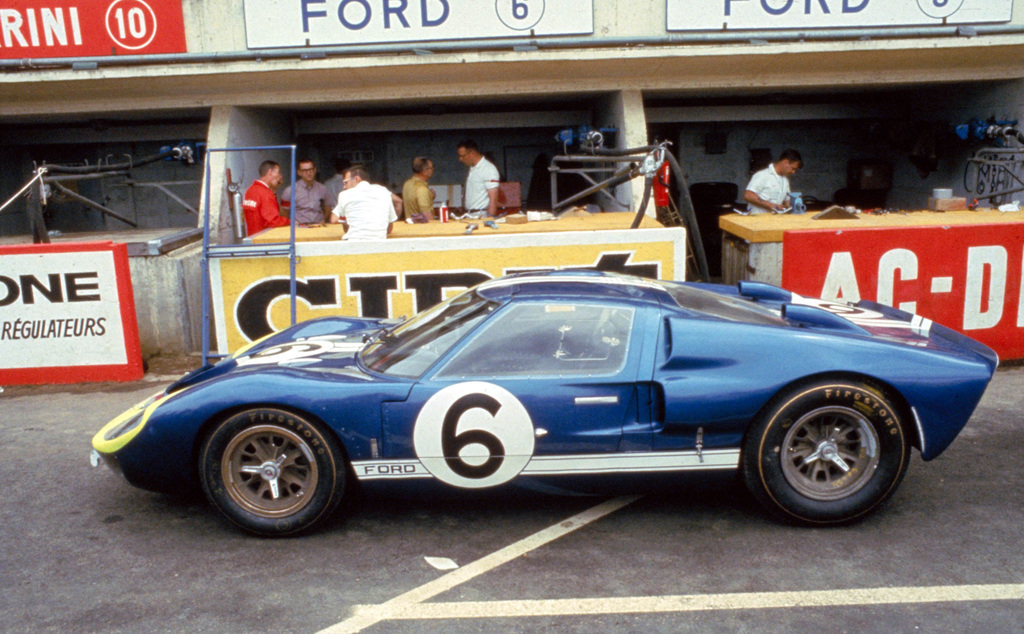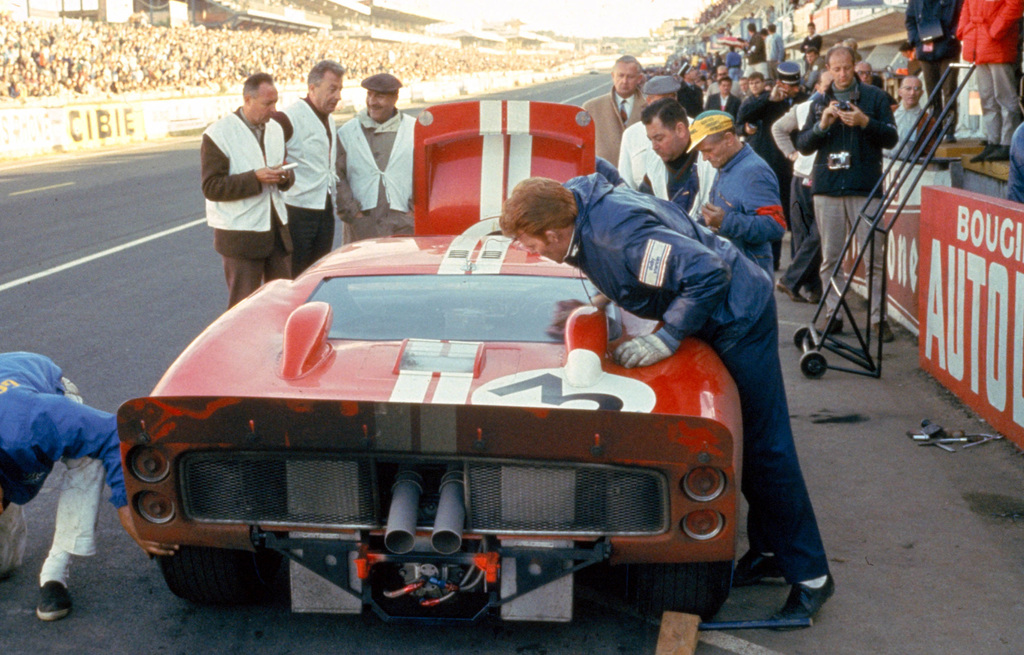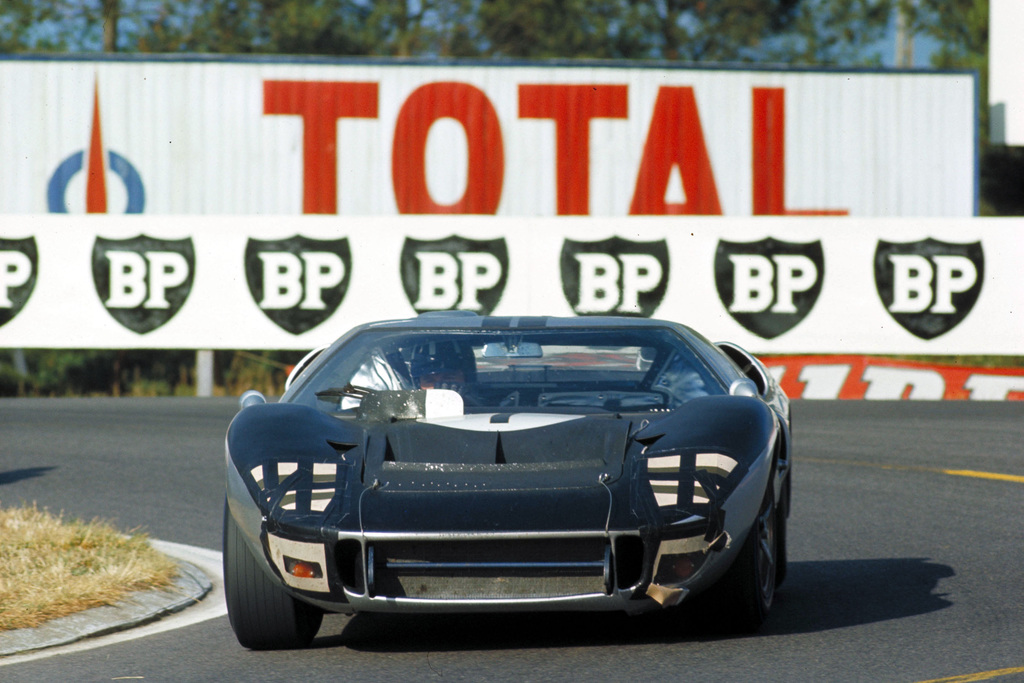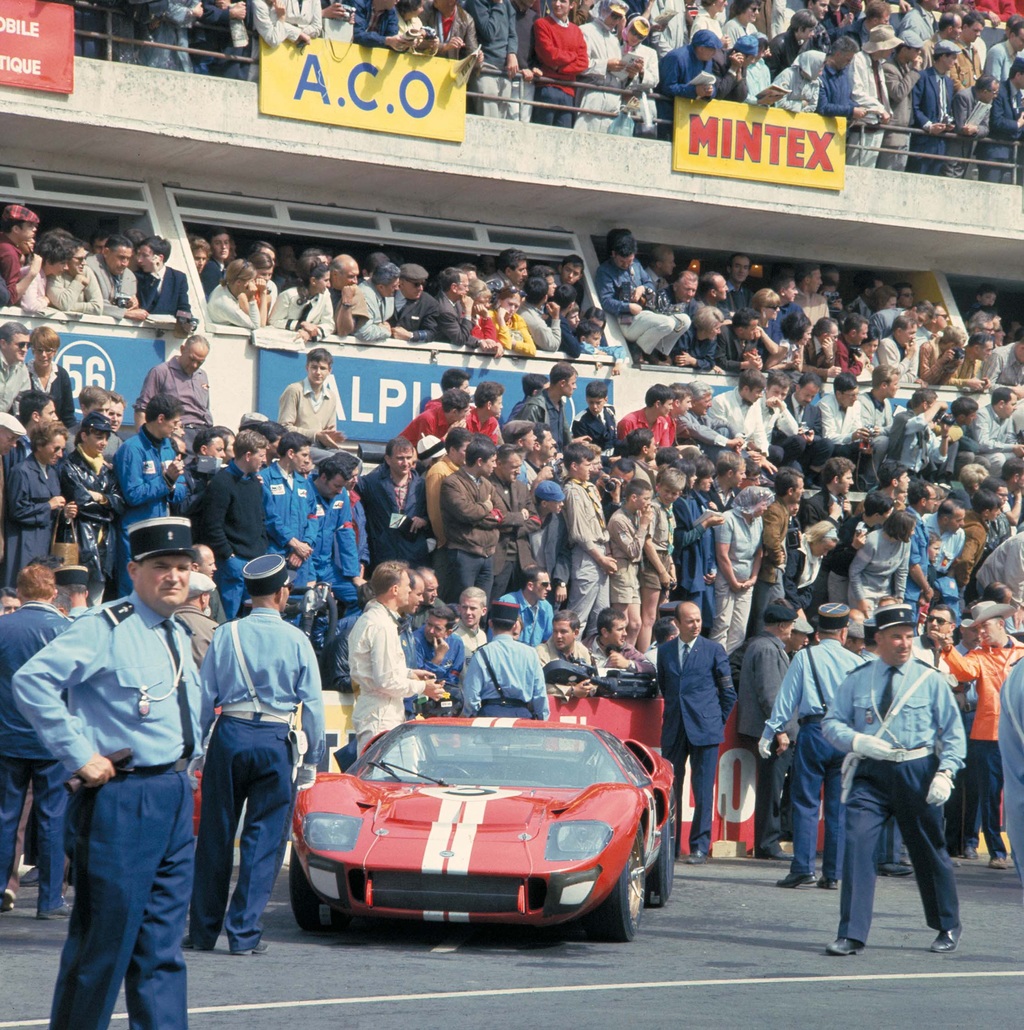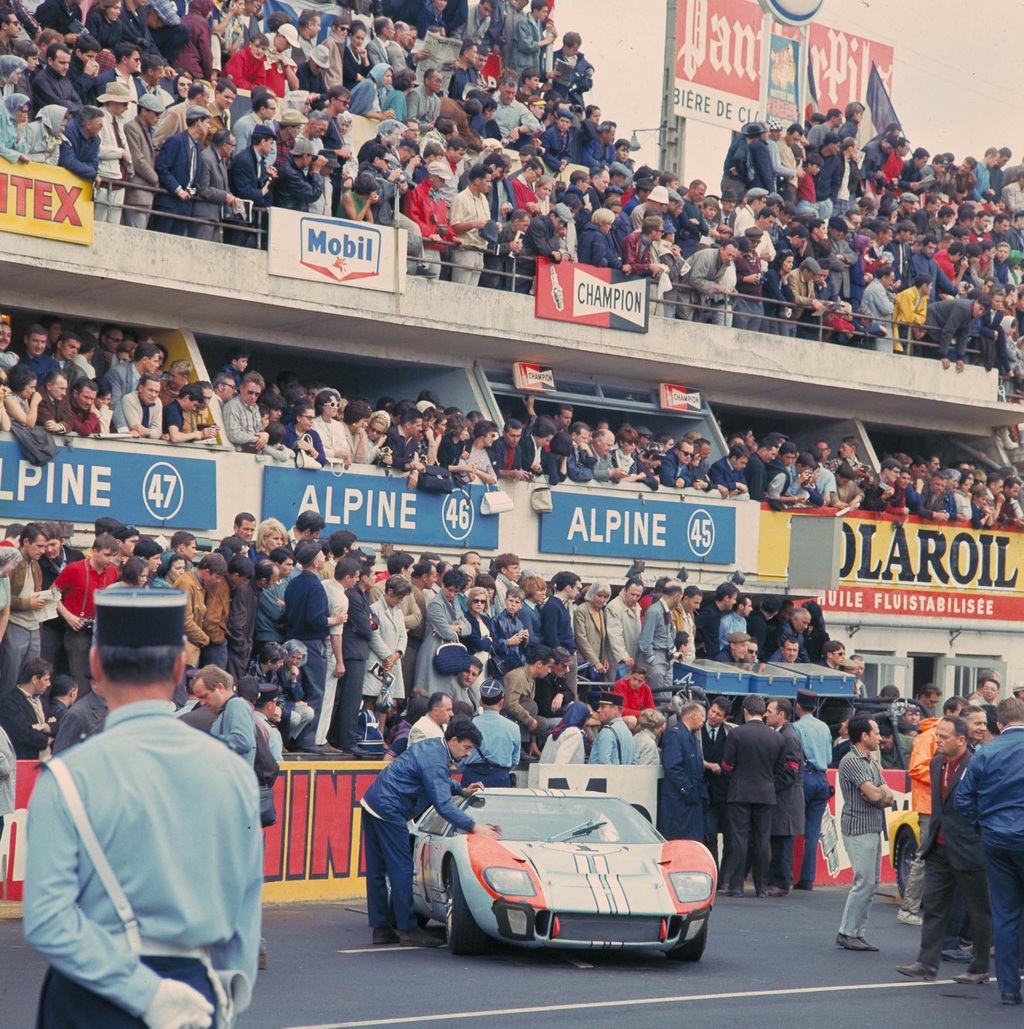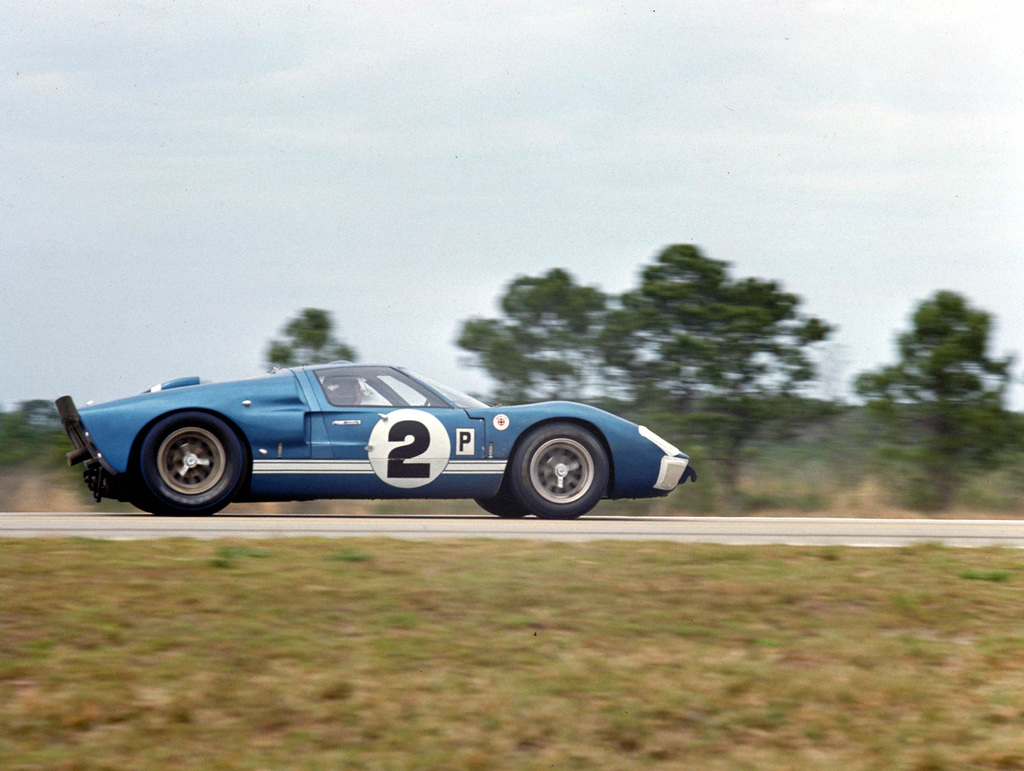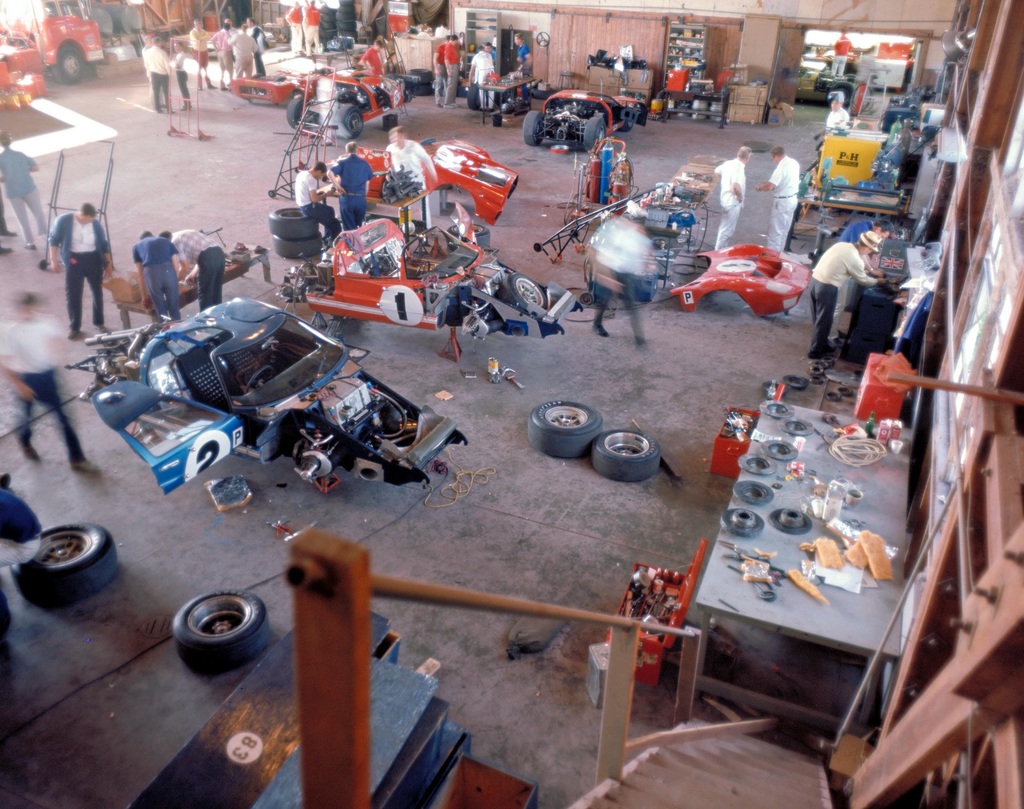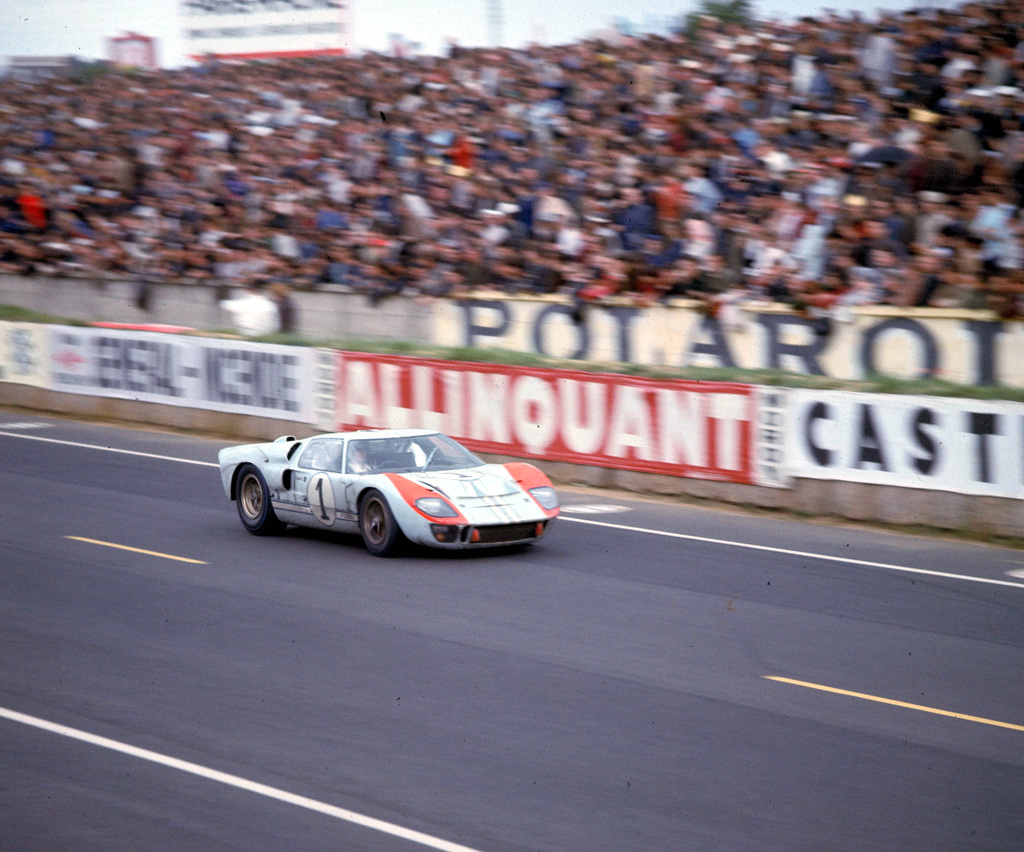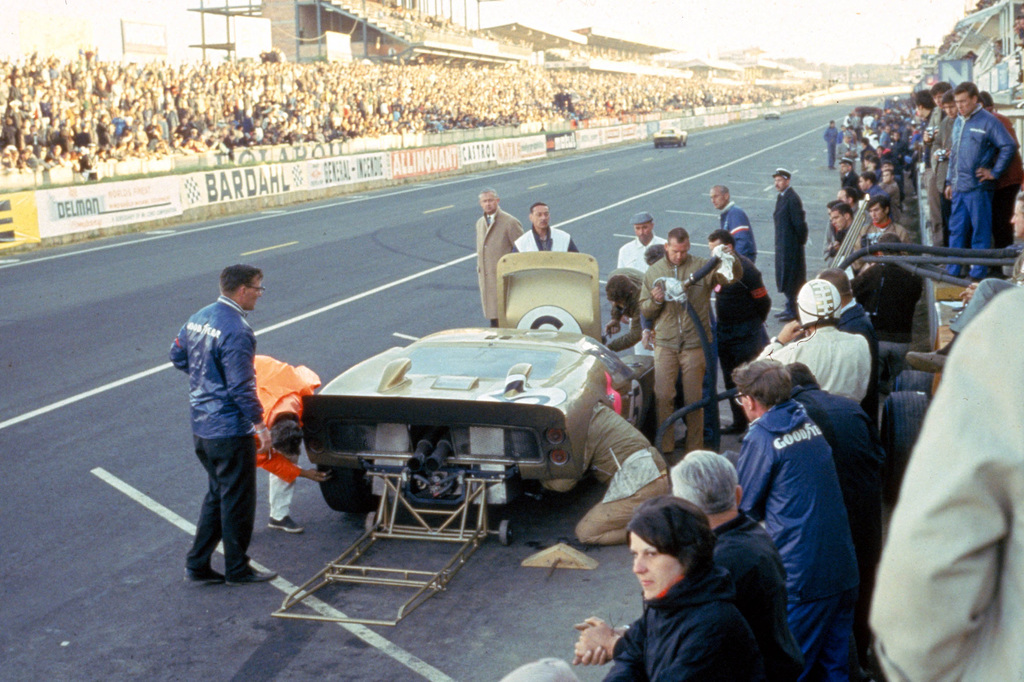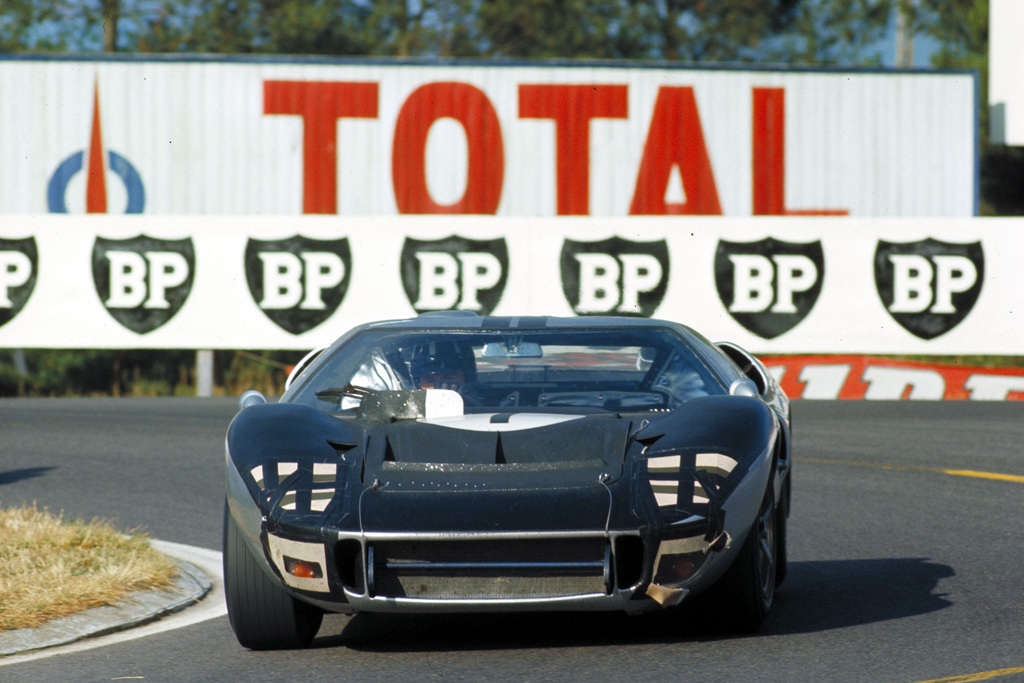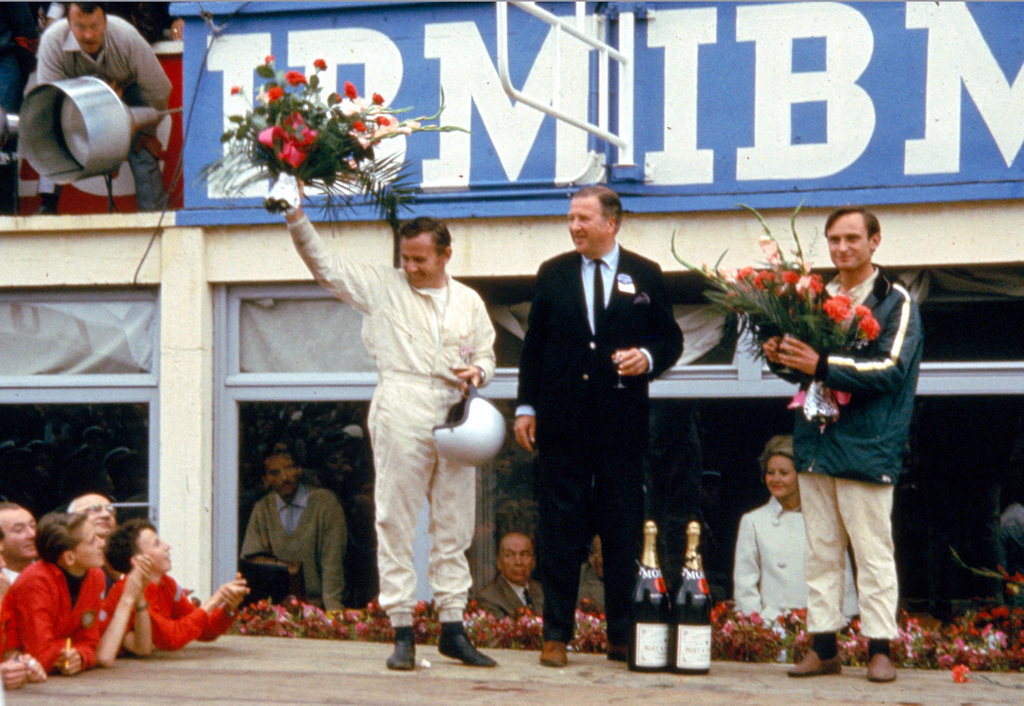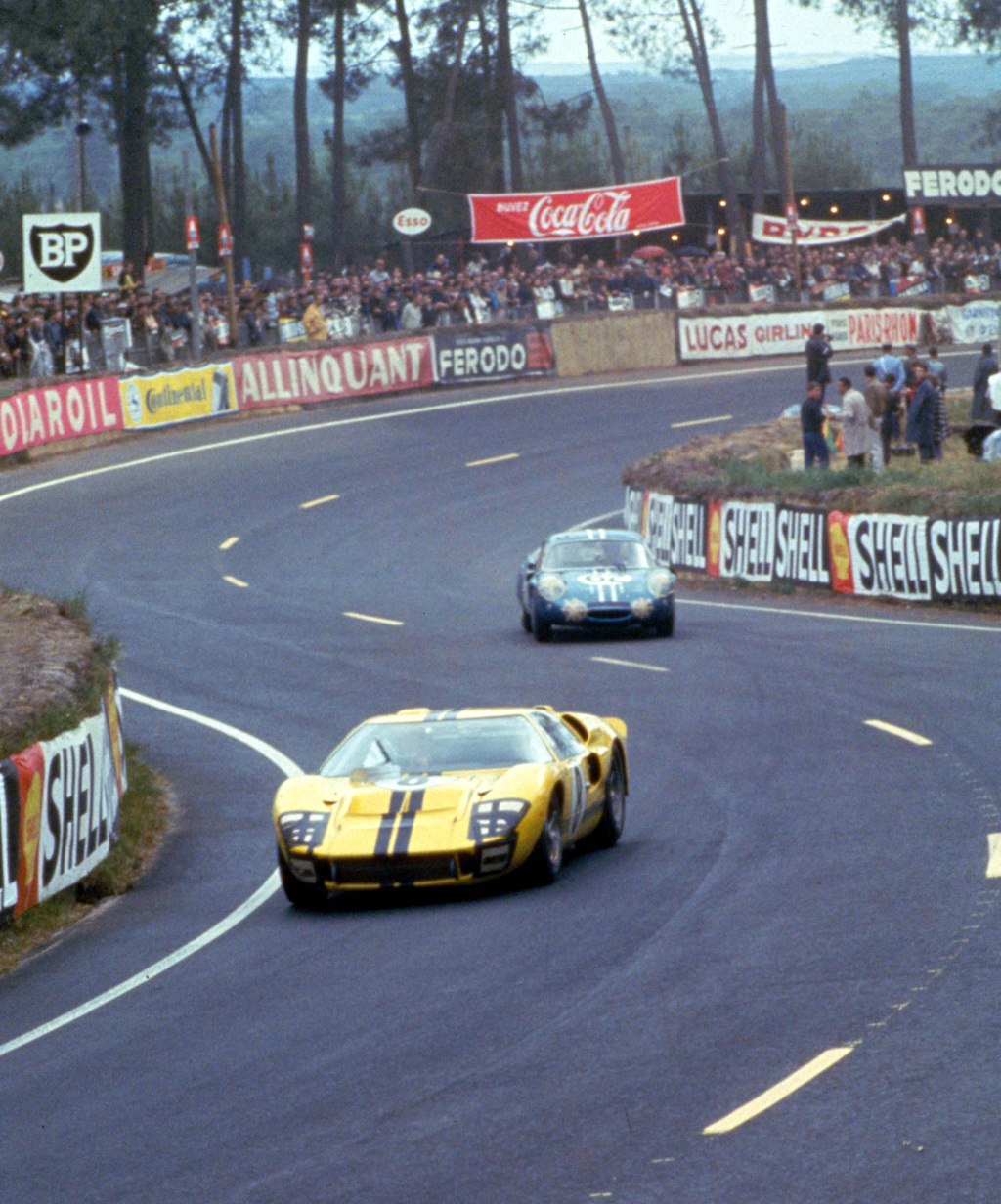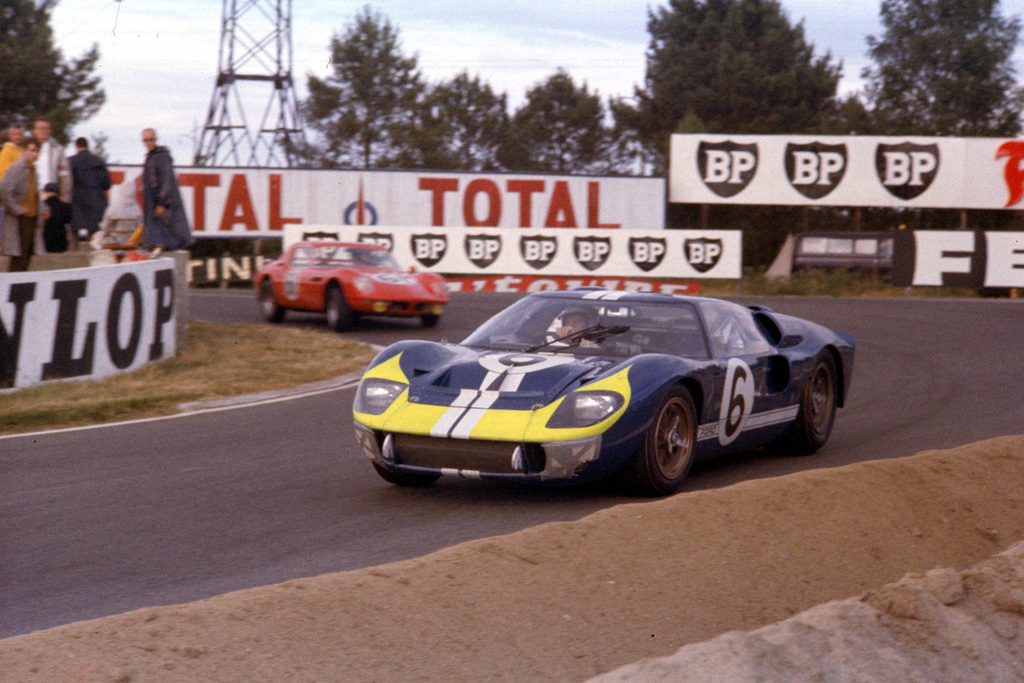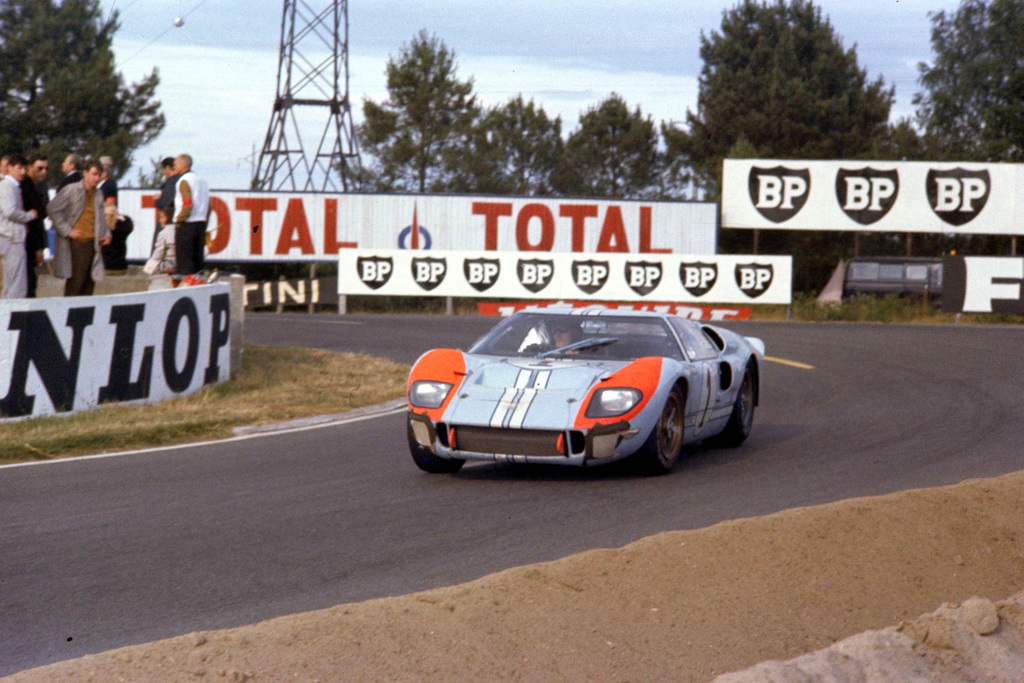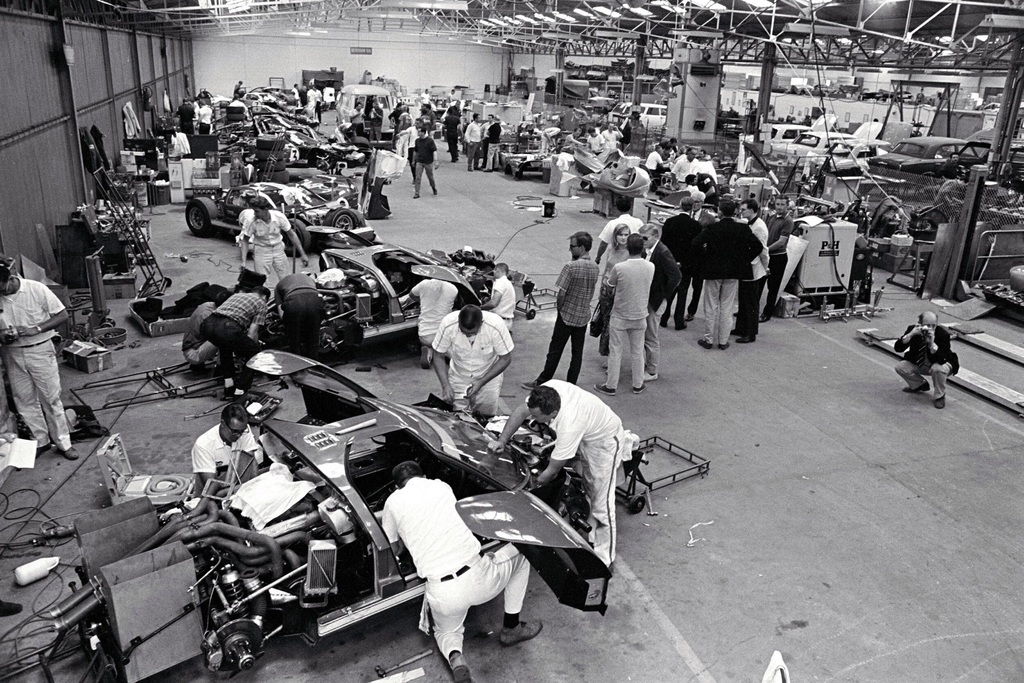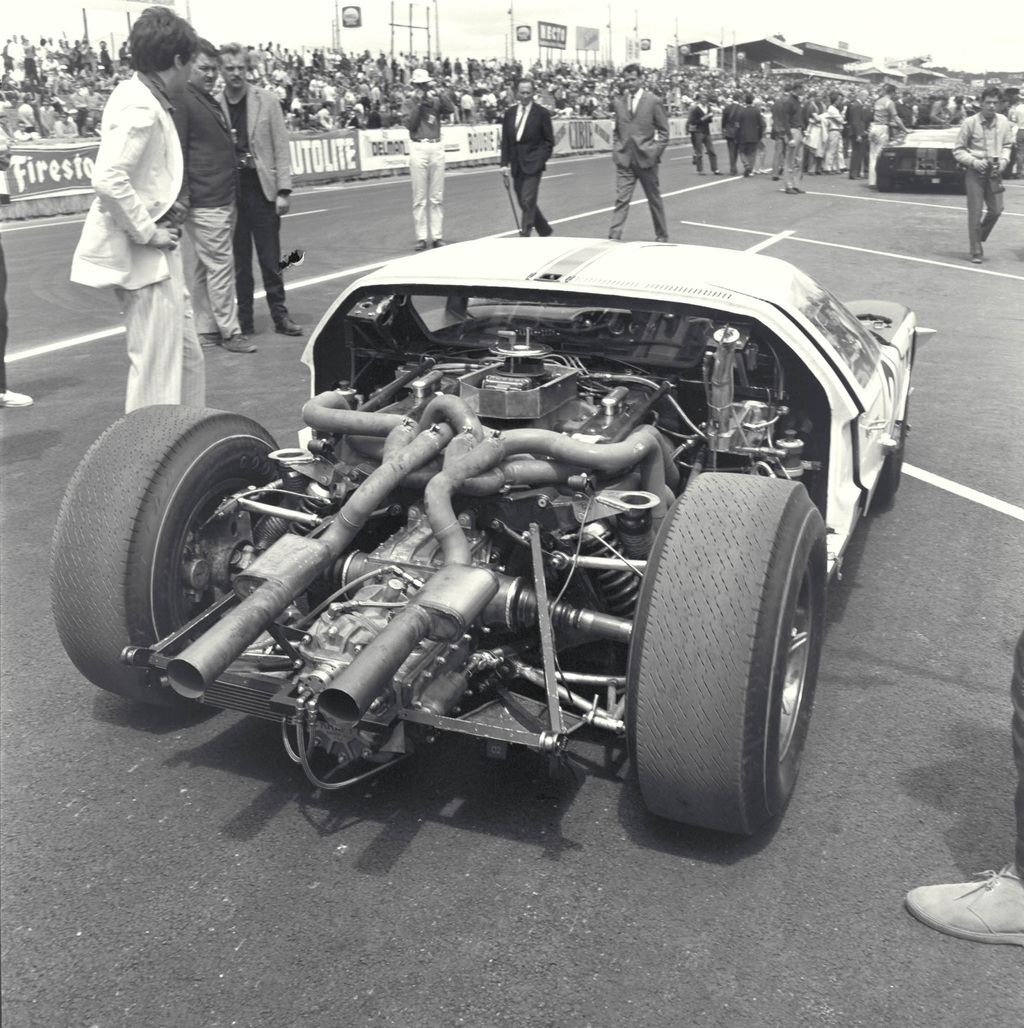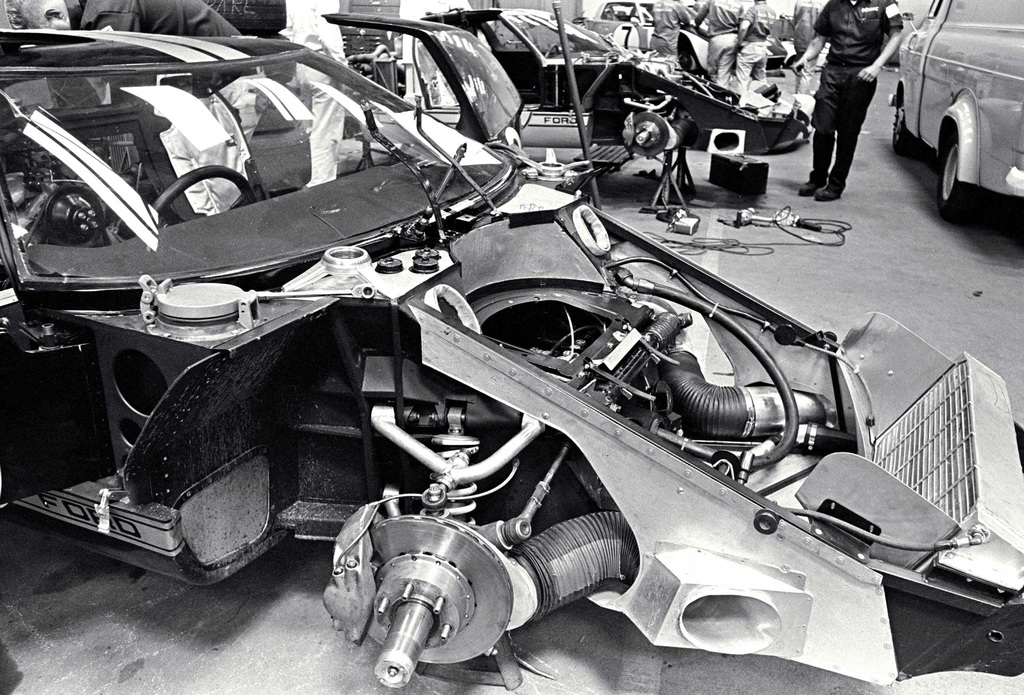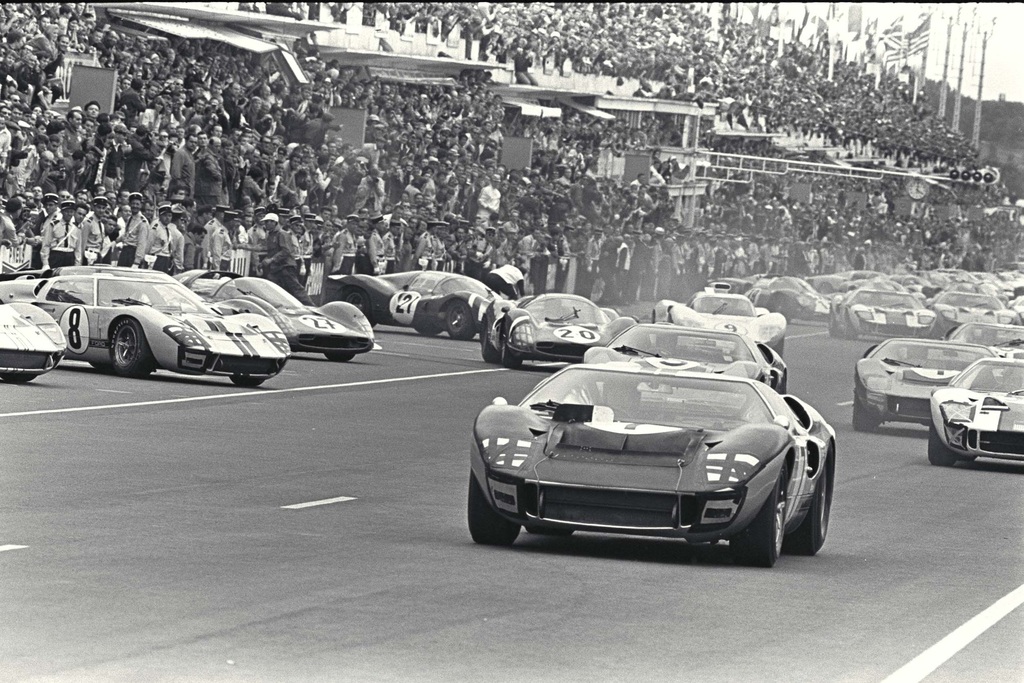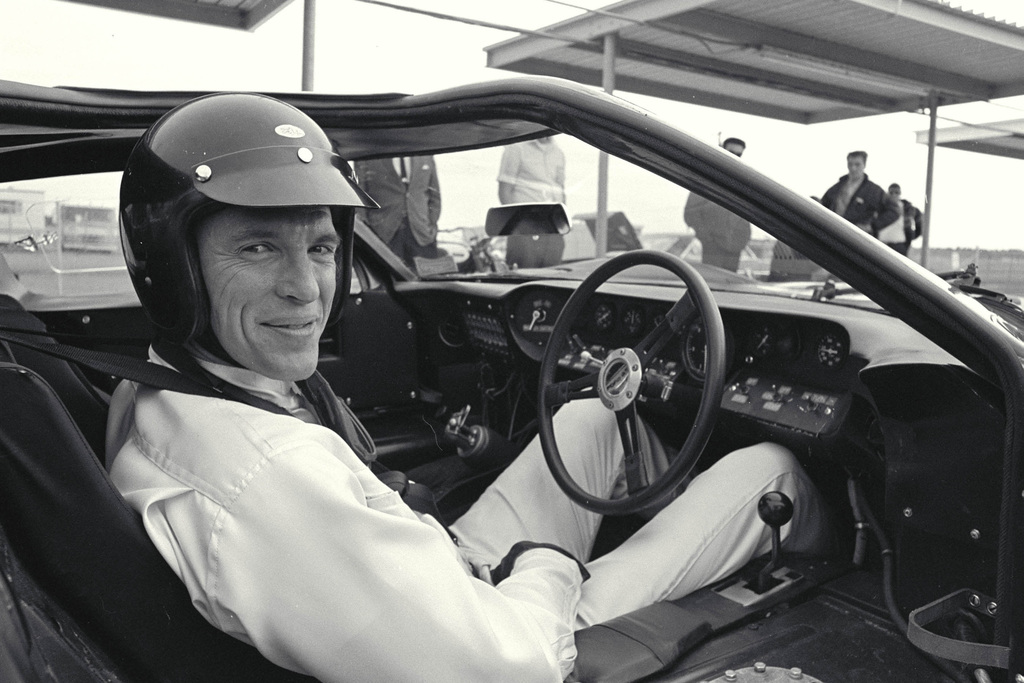1966 Ford GT40 Mark II
After an increasingly successful two year program, Ford and their partner Shelby American continued to campaign the GT40 in prototype endurance racing. The 1965 version of the GT40 proved itself capable and was primary opposition for Ferrari’s P2. For the new season, Ford concentrated on developing the Mark Two GT40 which would compete against Ferrari’s radically different 330 P3.
The early 427 GT40
During the 1965 LeMans, Ford received much attention for two large-displacement GT40s entered in the race. These two cars were prepared by Kar Kraft, a subsidiary of Ford run by Roy Lunn. They chopped up the GT40 chassis to accept the 427 CID Galaxie engine. Unfortunately, development time on these cars was short and the decision to run them at Le Mans was unexpected.
The initial performance of the 427 GT40 was promising. The car could reach 210 mph down the Mulsanne straight and qualified almost ten seconds faster than any Ferrari. During the opening hours of the race, prototype GT40s were in the lead. Unfortunately transmission problems arose, retiring both cars. Afterwards, it was clear that the 427 GT40 would be the car to race and a more robust transmission was necessary to make the distance.
The 1965 car left many problems which Kar Kraft could not have reversed during their short development time. Although the car was basically the same as the Mark I it had several hundred additional pounds of reinforcing and a longer nose which interfered with aerodynamics. Even though these problems arose, it was decided that the relatively cheap, NASCAR-proven 427 would power the 1966 Mark Two GT40.
The new 427 GT40
Upon knowing Ford was to use the 427, Shelby inquired to have Ford’s Engine and Foundry Division reduce the weight of the NASCAR V8. Aluminum heads with smaller valves and other refinements helped shed 50 lbs off the engine.
Other modifications to the engine included the conversion to dry-sump lubrication with the help of NASCAR oil coolers and the move to a single Holley 4-barrel carburetor. After all was done the engine produced 485 bhp which was below the 520 BHP NASCAR unit, and well below the 100hp per liter achieved by the competition.
Special attention was paid to the gearbox and differential to properly deliver the tremendous torque generated buy the engine. Kar Kraft used many resources and development time to ensure the transmission failures of 1965 would not repeat. Surprisingly, Kar Kraft did not incorporate ZF’s new 5-Speed into the car.
Most of the chassis and suspension work was carried out by Shelby American. They revised suspension points, and reinforced the chassis only were needed.
Since the Girling discs were already reaching their limits in the small block GT40s, it is no surprise they were having a hard time stopping the faster and heavier 427 cars. Since there was little room to enlarge the disc and ducting already cooled them at too high a rate, a new solution was needed. Phil Remington, Shebly’s chief engineer, designed a method to quickly change the discs during a race. The system comprised of a retainer which allowed rapid removal of the brake caliper to provide fast access to the discs. Since the life a disc was roughly 13 hours, during longer races discs swaps would be mandatory.
As mentioned, the 1965 cars had a longer nose to accommodate larger coolers and ducting. The nose impacted the car’s aerodynamics which necessitated the use of stabilizing fins at the rear of the car. For the new car, it was clear that the long nose had to go and a modified production front end was used. This shortened the car by nine inches and saved 19lbs in weight. At the rear a smoother and taller section was made with an adjustable rear spoiler.
Racing
Newly introduced in 1966, the FIA changed the hologation rules under which the cars ran. Three classes were divided into one-of prototype cars, competition GT cars of which 50 exmaples had to be built and GT cars of which 1000 examples had to be built. These classifications would run Ford in the prototype class with its seven liter mark II.
John Cowley was the race manager for the 1966 effort. He would focus on bringing together three separate teams to share development and testing. The three teams consisted of Shelby American, Holman-Moody (previous stock car team) and Alan Mann Racing. It was these three teams which concentrated on winning at Le Mans and racking up championship points.
The Daytona Continental was the first race of the season and for the first time was a 24 hour event. Main competition to Ford came from the Ferrari P2, Chaparral 2D and the new Porsche Carera 6. During the race, the Chaparrals retired as did the one of the Ferrari P2s. This left the remaining NART P2 driven by Rodriguez and Andretti to chase the three GT40s which lead from the beginning of the race. During the middle of the event, the GT40s each came in for their anticipated disc brake swap. The Shelby team proved their quick-change design effective by taking only five minutes to replace the discs on the leading car. In the end the GT40s endured and took the top three positions giving Ken Miles and Lloyd Ruby the victory in chassis #1015. This victory put the pressure on Ferrari to deliver their new 330 P3.
Sebring, the second race in the series was also a GT40-led event. A special roadster version of the GT40 called the X-1 won the race with John Surtees and Mike Parkes behind the wheel. They were followed by three more GT40s giving Ford the first four positions.
Monza saw the debut of the 330 P3 as entered by Spa Ferrari SEFAC. This car did remarkably well and won the race. Its Lucas fuel injection system and stunning low body were a sign that this 330 was going to be great competition for Ford at Le Mans.
Skipping Targa Florio, Ford had a few entries in the Nurburgring 1000km but the victory went to Spa Ferrari SEFAC.
The next race was the most important of all, the 24 hours of Le Mans. Spa Ferrari SEFAC had entered two 330 P3s. Fortunate for Ford, both 330s would retire, one due to a crash and the other with transmission problems. This left Ford with an easy 1-2-3 victory. For the first time in history an American car had won Le Mans. It was the combination of chassis #1046 with drivers Bruce McLaren and Chris Amon that won the race.
With the victories attained in 1966, Ford took the constructors championship for prototype and series production cars.
Conclusion
From its inception leading into the Mark Two, the GT40 became more of an American product with each year of development. As such it took on the design principles that defined American automobiles of the era. These cars tended to have more weight and power than their smaller, high-revving European counterparts.
With the 1966 Manufacturers Championship in Ford hands, the GT40 project became one of the most influential projects in automobile racing. The GT40 Mark Two not only provided a major victory for American talent, it showed the world that a heavier, large-displacement car was an acceptable platform in the world of GT endurance racing.
In Detail
| submitted by | Richard Owen |
| type | Racing Car |
| built at | Slough, England |
| engine | Galaxie Watre-Cooled, 90 Degree V8 w/Dry Sump Lubrication |
| position | Mid-Longitudinal |
| aspiration | Natural |
| valvetrain | 2 Valves per Cyl, Pushrod Actuated |
| fuel feed | Holley 780cfm 4-Barrel Carburetor |
| displacement | 6997 cc / 427.0 in³ |
| bore | 108 mm / 4.25 in |
| stroke | 96 mm / 3.78 in |
| compression | 10.5:1 |
| power | 361.7 kw / 485.0 bhp @ 6200 rpm |
| specific output | 69.32 bhp per litre |
| bhp/weight | 436.54 bhp per tonne |
| torque | 644.01 nm / 475.0 ft lbs @ 5000 rpm |
| redline | 7400 |
| body / frame | Fibreglass Body over Sheet-Steel Semi-Monocoque w/Square Tube Stiffening |
| driven wheels | RWD w/LSD |
| front tires | 9.75×15 |
| rear tires | 12.80×15 |
| front brakes | Girling Vented Dicsc |
| rear brakes | Girling Vented Dicsc |
| front wheels | F 38.1 x 20.3 cm / 15.0 x 8.0 in |
| rear wheels | R 38.1 x 24.1 cm / 15.0 x 9.5 in |
| steering | Rack & Pinion |
| f suspension | Double Wishbones w/Coil Springs, Tube Shocks, Anti-Roll Bar |
| r suspension | Transverse Top Link w/Lower Wishbone, Trailing Arms, Coil Springs, Anti-Roll Bar |
| curb weight | 1111 kg / 2450 lbs |
| wheelbase | 2413 mm / 95.0 in |
| front track | 1448 mm / 57.0 in |
| rear track | 1448 mm / 57.0 in |
| length | 4140 mm / 163.0 in |
| width | 1778 mm / 70.0 in |
| height | 1028 mm / 40.5 in |
| transmission | Ford T44 4-Speed Manual modified by Kar Kraft or ZF 5DS-25 5-Speed Manual |
| gear ratios | 2.22:1, 1.43:1, 1.19:1, 1.00:1 |
| final drive | 2.77:1 |
| top speed | ~329.9 kph / 205.0 mph |




